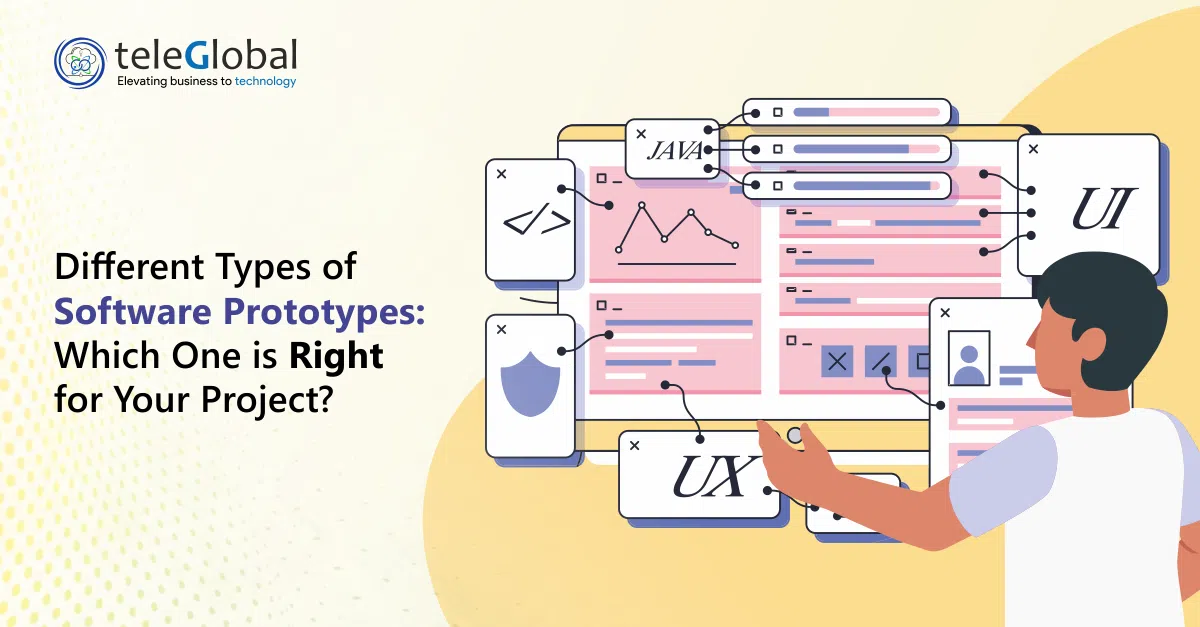
| Author: Abhinita Singh | Published: 17-Dec-2024 |
Building software without a prototype is like constructing a house without a blueprint-you might get a roof, but it won’t be the dream home you pictured. software development, clarity is critical, and prototyping lets you test your ideas, get user feedback early, and reduce risk by avoiding costly mistakes before full-scale development begins.
But not all prototypes are created equal. Every prototype has its own role to play, and picking the right one can shape your project’s timeline, budget, and success. In this blog, we’ll break down the major types of software prototypes, their use cases, pros and cons, and how to determine which approach aligns best with your needs.
Think of prototyping as sketching before painting. It’s the stage where you shape ideas, test interactions, and align expectations before investing heavily in code. The practice of developing an early model of a system to see its architecture, usability, or usefulness before it is fully developed is known as software prototyping. It helps stakeholders understand what’s being built, refine requirements, and make informed decisions early in the project lifecycle.
Below are the software prototyping types, each tailored to different development goals and stages.
Throwaway prototypes are built quickly to explore ideas and test user interaction. Once they serve their purpose, they’re discarded and not part of the final product. Like sketching ideas on a whiteboard, you erase and redraw until it feels right.
Unlike throwaway models, evolutionary prototypes are continuously improved based on user feedback and are gradually transformed into the final system. Like renovating a small cabin into a modern home-adding, improving, and evolving over time.
The system is divided into smaller parts (modules), and each is prototyped and tested independently. Eventually, these modules are integrated into the full system. Like assembling a complex puzzle in sections before connecting the pieces.
Used mainly in web applications, extreme prototyping consists of three phases: creating a static HTML model, adding simulated services, and then integrating real services. Like rehearsing a play with stage props before adding lighting and effects.
Ask yourself the following:
| Prototype Type | Best For |
|---|---|
| Throwaway | Quick feedback, early UI/UX testing |
| Evolutionary | Continuous refinement, dynamic requirements |
| Incremental | Large modular systems, parallel development |
| Extreme | Web applications, user interface focus |
Software prototyping isn’t just a preliminary phase, it’s a strategic instrument that can shape the success of your entire development journey. Whether you’re refining user experiences, exploring technical possibilities, or aligning stakeholder expectations, the right prototype turns assumptions into clarity, and ideas into outcomes.
Choosing wisely at this stage can save time, cut costs, and drive innovation forward. Not sure which prototyping path aligns best with your goals? Our experts can help turn your vision into a validated product roadmap, get the right prototype in place from day one.
Software prototyping isn’t just a preliminary phase, it’s a strategic instrument that can shape the success of your entire development journey. Whether you’re refining user experiences, exploring technical possibilities, or aligning stakeholder expectations, the right prototype turns assumptions into clarity, and ideas into outcomes.
Choosing wisely at this stage can save time, cut costs, and drive innovation forward. Not sure which prototyping path aligns best with your goals? Our experts can help turn your vision into a validated product roadmap, get the right prototype in place from day one.
 close
close

Hi there! At TeleGlobal, we turn your cloud vision into AI-accelerated reality. What challenge can we help you solve?
Powered by ![]() teleBot
teleBot